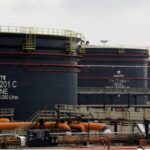Nigeria’s crude oil production declined to 1.45 million barrels per day (bpd) in May 2025, according to data released by the Nigerian Upstream Petroleum Regulatory Commission (NUPRC).
This is a 2.2% drop from the 1.49 million bpd recorded in April, reflecting a continued downward trend that has raised concerns over the country’s oil sector performance and its broader economic implications. When condensate production is included, the total output fell from 1.68 million bpd in April to 1.65 million bpd in May.
Condensates—light liquid hydrocarbons typically extracted from natural gas streams—contributed approximately 204,493 bpd to May’s total output. Despite the combined production being close to Nigeria’s Organization of Petroleum Exporting Countries (OPEC) quota of 1.5 million bpd, the decline signals mounting pressure on Nigeria’s revenue generation capacity, particularly in the face of falling global oil prices.
The NUPRC highlighted that Nigeria’s lowest and peak daily combined crude and condensate output in May were 1.61 million bpd and 1.81 million bpd respectively. The average daily production stood at 1,657,435 bpd. Industry analysts warn that the current trend, if not reversed, could weaken Nigeria’s external reserves, further destabilize the naira, and strain public finances dependent on oil exports.
- Advertisement -
Meanwhile, the Nigerian National Petroleum Company (NNPC) Limited reported that natural gas production rose to 7,354 million standard cubic feet per day in April, up from 7,120 mmscf/d in February. The company posted a revenue of N5.89 trillion for the month, with a profit after tax of N748 billion. Statutory payments in the first quarter of 2025 totaled N4.225 trillion.
Looking ahead, NNPC is expected to take Final Investment Decisions (FIDs) on four major projects by Q4 2025. These include the Ntokon Development (OML 102), Crude Oil Expansion (OML 29), Gas Development Projects (OMLs 30 and 42), and the Brass Fertilizer Project. The fertilizer project in particular is poised to boost local fertilizer production, reduce imports, and support agricultural growth.










